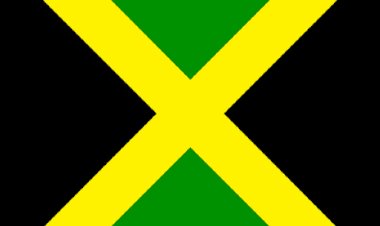Jamaican Americans Mobilize After the Island’s Worst Hurricane in a Century
Out of many, one people. Kimisha Simpson says she’s confident that Jamaica’s national motto will rally the diaspora and others to help rebuild the island that was battered by Hurricane Melissa earlier this week. “We like to say, ‘We’re the heartbeat of the Caribbean,’” Simpson said. “Jamaica is an island that has given so much […] The post Jamaican Americans Mobilize After the Island’s Worst Hurricane in a Century appeared first on Capital B News.


Out of many, one people.
Kimisha Simpson says she’s confident that Jamaica’s national motto will rally the diaspora and others to help rebuild the island that was battered by Hurricane Melissa earlier this week.
“We like to say, ‘We’re the heartbeat of the Caribbean,’” Simpson said. “Jamaica is an island that has given so much to the world — entertainment, the arts, the culture, the food, the tourism, the hospitality. And so knowing the devastation is unlike anything they’ve ever seen in centuries, it’s definitely time for the world to give back to Jamaica.”
After Hurricane Melissa hammered Jamaica as a Category 5 storm, bringing 185 mph winds on Tuesday afternoon, it brought life-threatening storm surge and floods to Cuba and Haiti. It later turned towards the Bahamas and headed to Bermuda.
The storm, one of the most powerful ever recorded in the Atlantic, left Jamaica reeling before weakening slightly as it crossed warm Caribbean waters toward its next target.
In its wake, dozens have died amid widespread destruction across Cuba, Haiti, and Jamaica. More than two dozen people died in Jamaica and Haiti as of Thursday. The exact death toll will become clearer in coming days once aid workers are able to reach more remote and damaged areas.
Simpson is the founder and CEO of Ignite Jamaica Fund, a nonprofit based in Philadelphia that does educational advocacy work on the island. Ever since the hurricane touched down there, she’s been reaching out to friends and family in Manchester, a parish in the western region. She said she wanted to “get updates beyond the media and hearing from them what they were experiencing.”
As the storm pummeled Jamaica, it brought the strongest hurricane wind speed to make landfall in 90 years. With it came catastrophic floods, landslides, and a sea surge up to 13 feet along the island’s southern coast. The storm knocked out power and telecommunications for much of the country, with internet connectivity dropping to about 30% of normal levels by Tuesday night, according to NetBlocks, which monitors global outages.

Power lines, roads, and bridges were damaged across the island, and more than half a million people were left without electricity.
“The change in its trajectory really took the island by surprise,” said Simpson, who was a former principal and teacher. “When we heard about the landfall earlier this week, and we started to get the videos, the updates from those on the ground, we were really devastated, and the community across the diaspora, right away, started to galvanize, mobilize, and have calls about just how can we start to gather resources. Even before we knew what the outcome was going to be, we just saw it unfolding before us.”
The island is home to about 2.8 million people, about 90% of whom are Black. The diaspora of Jamaica — or the Jamaicans who have left and their descendants who live in the U.S. and all over the world — is estimated to be over 2 million people.
Daryl Vaz, Jamaica’s science, energy, telecommunications and transport minister, told Sky News that initial reports from the hardest-hit western parishes were “catastrophic.” In Saint Elizabeth Parish, where Melissa made landfall, floodwaters and flying debris destroyed homes and farms in what officials described as a “complete disaster.”
“There are entire communities that seem to be marooned and also areas that have been flattened,” said Dana Dixon, Jamaica’s minister of education, skills, youth and information, on Thursday. “We are trying to get to the areas that have been marooned. We will get there … We are going to get to every single Jamaican and give them support.”
In Kingston and other eastern areas, where the eye of the storm did not pass directly overhead, damage was less severe. Still, critical infrastructure remained compromised. Most rural hospitals lost power, and major airports in Montego Bay and Kingston remained closed.

Jamaican Prime Minister Andrew Holness has declared a national disaster. At least three people died before Melissa’s arrival, with local officials warning that more fatalities could be confirmed once communication resumes with rural areas.
The storm’s intensity, fueled by unusually warm Caribbean waters, has underscored the growing climate threat to small island nations with fragile infrastructure. This is the fourth storm in the Atlantic this year to undergo rapid intensification of its wind speed and power, a feat made twice as likely because of climate change, according to studies.
Melissa made landfall early Wednesday in eastern Cuba as a Category 3 storm with sustained winds near 120 mph, according to the National Hurricane Center. Cuban President Miguel Díaz-Canel warned residents late Tuesday of a “very difficult night,” urging them to stay sheltered. Officials said roughly 750,000 people were evacuated.
Melissa likely caused $7.7 billion of damage in Jamaica alone, according to catastrophe modeler Enki Research. But across the entire Northern Caribbean, recovery will be difficult.
Recovery challenges ahead
“We have this saying in Jamaica: one coco, full basket,” Simpson said. “It’s a proverb that means that all small efforts will compound over time and make a large impact. So no donation, monetary or supplies are too small. Anything that you’re willing to give can make an impact in a difference.”
Simpson and other organizers said it is going to take time to rebuild from devastation that is unlike something Jamaicans have seen in centuries.
Aid experts fear that Jamaica and Cuba could face severe public health challenges in the days ahead — contaminated water, collapsed medical facilities, disease outbreaks, and growing mental health crises. The United Nations has warned that budget cuts and reduced global aid donations are expected to limit the amount of food and emergency support agencies like the World Food Program can provide this year.
Much of Jamaica’s southern coast, its agricultural “breadbasket,” remains underwater after more than 2 feet of rain.
In the area, which got its nickname because it is where most of the island’s food is grown, farmers were just recovering in areas like St. Elizabeth. Last year’s Hurricane Beryl damaged crops in June. And then came Hurricane Melissa.
This time is different. There was a direct hit.

“All the crops, I’m sure, are gone,” said Karen Shields, who lives in Westgate Hills in Montego Bay.
Shields is the island liaison for the Jamaicans Abroad Helping Jamaicans at Home (also known as JAHJAH) Foundation. As the director of operations, she helps coordinate aid to the island.
“The farmers are just getting back on foot,” she said. “And so it’s, I know it’s gonna take a very long time. But we have to see what we can do, just, you know, to make quick fixes and reach those low-hanging fruits to help to do what we can in the interim.”
The day after Melissa came ashore, the 48-year-old Shields said she and her family were wondering what they would eat for breakfast. There was no electricity and most means of communication are down on the island, so she and others cannot contact loved ones.
On Wednesday, a neighbor came to her gate with breadfruit from a tree. Her family roasted the starchy staple.
“We are very kind to each other. We help each other,” Shields said. “Like people have their disagreements, but I’m telling you, when it comes to times like this, we stand together as one, we are united as one.”
In Cuba, the storm threatens power grids already pushed to the brink by years of shortages and blackouts intensified by a United States-backed blockade against the country.
President Donald Trump said Tuesday that the U.S. is “prepared to move” to help Jamaica and neighboring countries recover. The State Department announced Wednesday that it had activated U.S.-based Urban Search and Rescue teams to assist Caribbean nations in Melissa’s path.
However, typically, foreign disaster aid comes in the form of USAID, which the Trump administration disbanded earlier this year. Jamaica lost $22 million in funding through those cuts. Additionally, the Organisation for Economic Cooperation and Development projects that rich countries, including the U.S. and most of Europe, will reduce foreign disaster and recovery aid by around 15% this year.

Government officials across the region continue to warn that no Caribbean nation is truly prepared for a hurricane this powerful — or for the accelerating climate chaos fueling such storms.
Trevor Dixon, an emergency physician based in New York, is the founder and CEO of the JAHJAH Foundation. His organization focuses on health care and education advocacy, and he said he and others are already planning to head to the island as soon as they can to help.
Dixon said his organization provided aid during the last hurricane. “So once we got the call that Hurricane Melissa was coming, I was like, ‘Oh my goodness, we’re gonna have to do this again,’ he said. “Hurricane Beryl was just a dress rehearsal for a more dynamic and more devastating hurricane.”
Dixon, whose family’s house in Mandeville in Manchester Parish was devastated during the storm, said he plans to collect supplies in multiple locations in New York and New Jersey to fill two shipping containers to take “home.”
About 4 million tourists visit Jamaica each year.
“They have given a lot to the world,” Dixon said. “They’ve given music, they’ve given food, they’ve given sports, they’ve given to other governments. They’ve given to health care, they’ve given to education.
“It’s time that we give back to the people in Jamaica.”
How to Help Hurricane Victims
The government of Jamaica has set up an official website for updates on the storm as well as donations for emergency relief, housing reconstruction, and health care.
Relief agencies and others are beginning to set up some resources to help people impacted by the hurricane:
The Jamaicans Abroad Helping Jamaicans at Home Foundation assists public hospitals and health centers in Jamaica that are in need.
Ignite Jamaica Fund is a nonprofit organization that works to enhance the education of children and youth in Jamaica and across the Diaspora.
Jamaican Americans For A Better Jamaica Inc. is a nonprofit organization that was founded with the mission of providing Jamaican Americans diverse and feasible opportunities to stay connected and give back to Jamaica.
The American Friends of Jamaica Disaster Relief Fund provides “critical support when natural or humanitarian disasters impact communities across Jamaica.”
The International Medical Corps has deployed an emergency response team to provide critical supplies, medical workers, and support.
Mercy Chefs provides hot, chef-prepared meals and clean drinking water to people impacted by natural disasters and emergencies.
World Central Kitchen, a nonprofit founded by chef and humanitarian José Andrés, mobilizes after disaster strikes to provide food and water for first responders and victims in the affected areas.
Food For The Poor, the largest charitable organization in Jamaica, provides food, housing, clean water, and educational supplies to impoverished families.
The post Jamaican Americans Mobilize After the Island’s Worst Hurricane in a Century appeared first on Capital B News.























